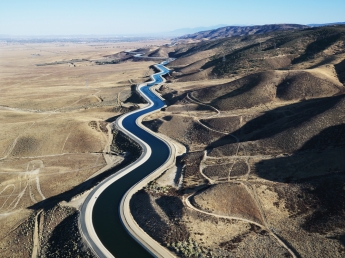HYDROLOGY
Hydrology is the study of the movement, distribution, and quality of water throughout Earth, and thus addresses both the hydrologic cycle and water resources. Domains of hydrology include hydrometeorology, surface hydrology, hydrogeology, drainage basin management and water chemistry, where water plays the central role.

Hydrological models
Hydrological models are conceptual and simplified representations of a part of the hydrologic cycle. They are mostly used for forecasting and understanding of hydrological processes: given precipitation data, models can estimate flow at the closing section of a river basin.
In cooperation with University of Bologna and under the guidance of Prof. Ezio Todini, PROGEA has developed two hydrological models and it distributes them since the '90:
ARNO it is a semi-distributed conceptual model that belongs to the family of variable contributing area models.
TOPKAPI it is a fully-distributed and physically based model that can be used at spatial and temporal scales of primary interest for operative hydrology.
Implementation and calibration of the model
PROGEA simulates with TOPKAPI model the hydrologic behavior of small, medium and large catchments, using few minutes' time steps for flash-floods forecasting in steep mountain basins, hourly time steps for flood forecasting in medium size catchments, daily time steps for the study of water resources at catchment scale. The main fields of application concern:
- Forecasting of the hydrological behavior of river catchments inside real-time flood forecasting systems (for instance EFFORTS system).
- Flow estimation and flood forecasting in instrumented and non-instrumented basins.
- Simulation of hydrological water balance in water resources studies
- Simulation of inflow to artificial reservoirs
Activities performed during the implementation of TOPKAPI model include:
- Analysis of hydrologic and hydro-geologic characteristics of the basin
- GIS elaboration of thematic maps, such as land use, soil type, vegetation, ect.
- Definition of the hydraulic properties of catchment soils on the basis of pedology
- Definition of model parameters concerning land use, such as roughness and cultural coefficients
- Analysis of available hydro-meteorological data for model calibration
- Calibration of the model with a trial and errors procedure
- Validation of model calibration using continuous simulations over a few years: water balance and main flow peak events.
In order to better understand quality of results produced by TOPKAPI model, the activities of implementation and model calibration are followed by training to end user's technicians to illustrate model characteristics and particularities of model implementation.
More »

